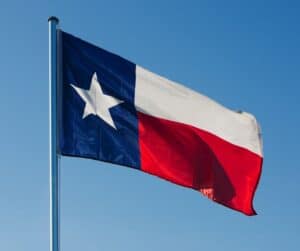If you guessed Texas has Santa Anna’s fake leg, you guessed wrong.
The Battle of San Jacinto
On March 2, 1836, Texas declared its independence. Fifty-one days later, on April 21, the Texas Revolution ended in an unqualified success when General Sam Houston and the Texas militia trounced the Mexican Army at the battle of San Jacinto. The battle was one of the most lopsided victories in history. Mexican Dictator General Antonio Lopez de Santa Anna was captured. To gain his freedom, he had to acknowledge Texas as an independent country.
Losing the war was one thing. Losing all that land was another. Santa Ana returned to Mexico disgraced and dishonored.
Did You Know…
- The Battle of San Jacinto lasted only eighteen minutes.
- Mexico lost nearly one million square miles of land when it lost the war with Texas.
- A few years after the Texas Revolution, Santa Anna had a chance to redeem his reputation. Fighting the French in Veracruz, he was wounded by cannon fire, and his leg had to be amputated. Nearly a decade later, during the Mexican-American War in 1847, Santa Anna escaped capture by American troops. However, his prosthetic leg wasn’t as lucky. The 4th Illinois Infantry nabbed it and took it back to the states. Today it is displayed in the Illinois State Military Museum.
The Capital
Not everyone agreed on where the new republic’s capital should be located. Before winning its independence in 1836, San Felipe acted as the capital for Texas’s provisional government, as did Washington-on-the-Brazos, Harrisburg, Galveston, and Velasco. Columbia became the first capital of the Republic’s elected government. A couple of months later, though, President Houston ordered the new government to move to the city of Houston. It remained there until 1839, when the Capital Commission suggested Austin as the capital’s permanent site. The Texas Congress confirmed the choice, and the new Texas president, Mirabeau B. Lamar, and his cabinet made the move.
After becoming president again in 1841, Sam Houston wanted to move the republic’s capital back to Houston. When Mexico invaded Texas in 1842, he saw his chance. Claiming Austin couldn’t defend itself against Mexico, the president and government left Austin in September. In December, Houston ordered men to take the republic’s archives out of Austin. Three wagons were loaded before a local woman saw them and alerted residents by firing a cannon. The men and wagons fled but were caught just north of Austin. Held at gunpoint, they surrendered, and the wagons with the looted archives were returned.
The government, too, finally returned to Austin in 1845. But there was still some question of it remaining the Texas capital. That question was finally settled in 1850, when the majority of Texans voted for Austin.
Did You Know…
- In the early 1830s, the commercial center of Texas was San Antonio, but San Felipe was second.
- San Felipe was burned so the Mexican army couldn’t capture it. It was eventually rebuilt, but the popularity it once enjoyed never returned.
- The city of Austin was once called Waterloo. It was renamed Austin in honor of Stephen F. Austin.
The Flag

Texas Flag Since 1838
Today, when we think of the Texas flag, we think of the red, white, and blue flag with a white star. But that flag wasn’t adopted until 1838. In 1836, Texas’s first flag, the “Burnet Flag,” was one solid field of dark blue with a large yellow star at its center.

1st Texas Flag
Did You Know…
- No state has had as many flags fly over it as Texas. Texas has belonged to six different nations at one time or another during its history. (For more information, read DYK Bugs Bunny Spoofed Clark Gable?)
- The colors in the Texas flag represent Purity (white), Bravery (red), and Loyalty (blue). The lone white star symbolizes the unity of Texas and its people.
- Texas’ nickname, “Lone Star State,” refers to its fight to be independent of Mexico and its past as an independent republic.
Final Thought
In a couple of days, it will be 189 years since Sam Houston and his men defeated Santa Anna at San Jacinto, ending the Texas Revolution. The journey to independence wasn’t easy. Places like the Alamo and Goliad remind us of the heavy sacrifices that were made. But I’m grateful they chose to travel that path. Thanks to them, I’m a Texan.

